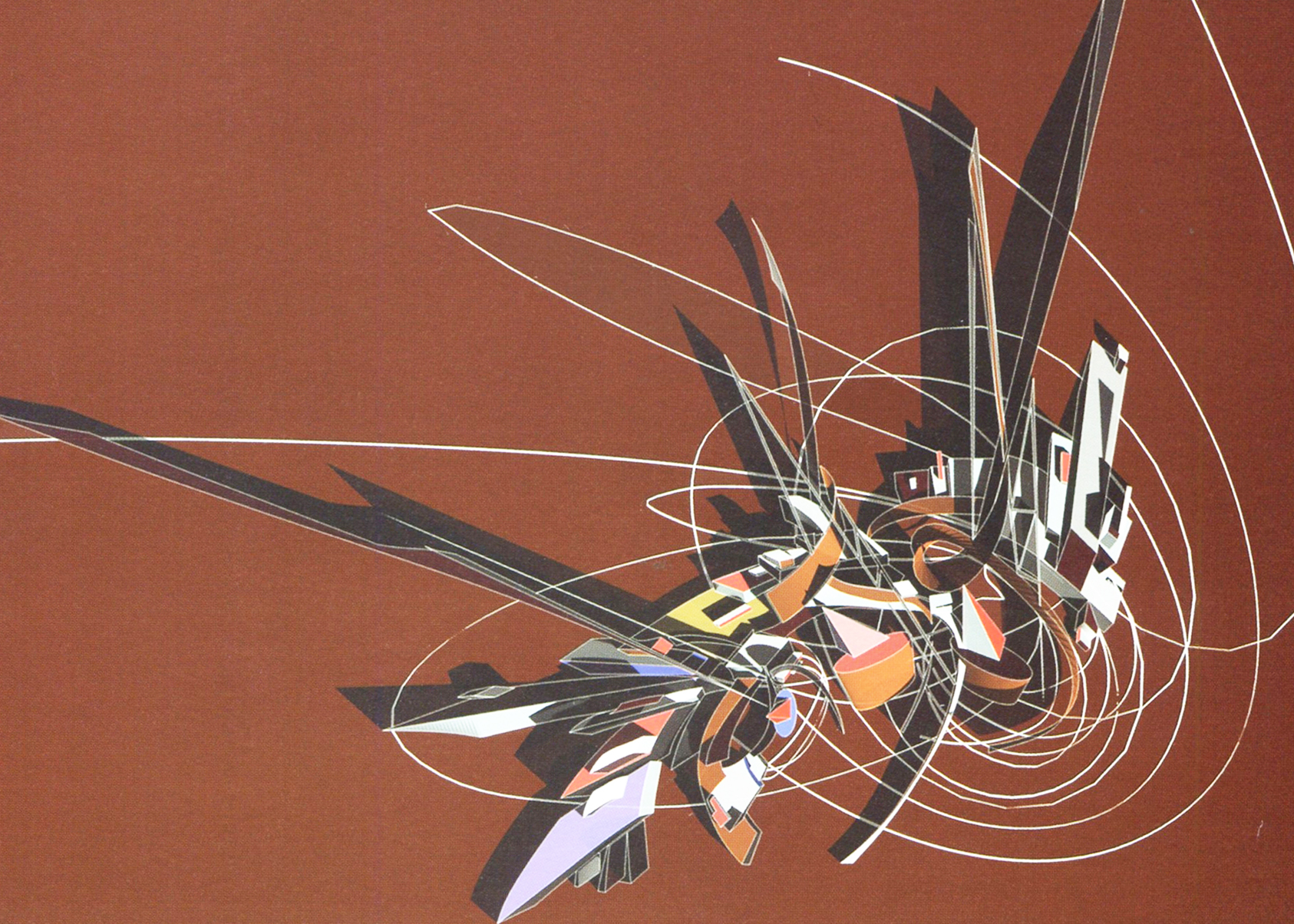The many dimensions of the digital model
DOI:
https://doi.org/10.19229/2464-9309/722020Keywords:
drawing, model, three-dimensional modeling, multidimensionality, representationAbstract
In the construction of a model, architectural drawing is not so much ‘representative drawing’ as ‘constructive drawing’. Scale and measure are fundamental criteria for interpreting and representing the parts of a unicum linked together in a hierarchical or interconnected relationship. This gives rise to the entire asset of a project, where various disciplines, or spheres of knowledge, integrate to generate models that make it possible to simulate its construction and predict its impact. For digital design, the computer screen is like a window opening onto the model’s virtual space that allows us to observe and interact with it while moving and modifying it. Virtual reality, immersive and mixed, creates new dimensions that animate the model, and from these dimensions, the complexity of the multiscalar project unfolds as the result of multidimensional thinking, for a creative, multidirectional, anti-dogmatic model.
Downloads
Article Metrics Graph
References
Attenni, M., Bianchini, C. and Ippolito, A. (2019), “HBIM ovvero un modello informativo per l’edificio storico | HBIM: an information model for historical building”, in Belardi, P. (ed.), Riflessioni. L’arte del disegno, il disegno dell’arte | Reflections. The art of drawing, the drawing of art – 41° Convegno Internazionale dei Docenti delle Discipline della Rappresentazione, Gangemi Editore, Roma, pp. 285-296. [Online] Available at: www.torrossa.com/it/ catalog/preview/4545658 [Accessed 2nd May 2020].
Bolognesi, C. (2018), “Il BIM come linguaggio di condivisione”, in BIMportale.com, 09/05/2018. [Online] Available at: www.bimportale.com/ bim-people-cecilia-bolognesi-il-bim-come-linguaggio-di-condivisione/ [Accessed 2nd May 2020].
Bolognesi, C. (2016), “La rappresentazione nell’era BIM oriented”, in Ingenio-web.it, 25/01/2016. [Online] Available at: www.ingenio-web.it/5259-la-rappresentazione-nellera-bim-oriented [Accessed 2nd May 2020].
Brusaporci, S., Centofanti, M., Maiezza, P., Tata, A. and Ruggieri, A. (2019), “Per una riflessione teorico-metodologica sulla procedura HBIM di modellazione informativa dei beni architettonici | For a theoretical-methodological consideration on the HBIM procedure for the informative modelling of the architectural heritage”, in Belardi, P. (ed.), Riflessioni. L’arte del disegno, il disegno dell’arte | Reflections. The art of drawing, the drawing of art – 41° Convegno Internazionale dei Docenti delle Discipline della Rappresentazione, Gangemi Editore, Roma, pp. 449-456. [Online] Available at: www.torrossa.com/it/catalog/preview/4545658 [Accessed 2nd May 2020].
Fatta, F. (2018), “Paesaggi antichi e paesaggi archeologici dal Grand Tour al mondo virtuale”, in Bianconi, F. and Filippucci, M. (eds), Il Prossimo Paesaggio – Realtà, rappresentazione, progetto, Gangemi Editore, Roma, pp. 63-70.
Gausa, M. (2019), “Mappare (in) il nuovo tempo. Nuove rappresentazioni analitico-sintetiche per la nuova n-città e i suoi multi-territori | Mapping (in) the New Time. New Analytical-Synthetic Representations for the New n-City and its Multi-Territories”, in Diségno, vol. 5, pp. 143-156. [Online] Available at: doi.org/10.26375/disegno.5.2019.15 [Accessed 2nd May 2020].
Lo Turco, M. and Bocconcino, M. M. (2017), “Esattezza, molteplicità e integrazione nell’Information Modeling & Management | Exactitude, multiplicity and integration in Information Modelling & Management”, in Techne | Journal of Technology for Architecture and Environment, vol. 13, pp. 267-277. [Online] Available at: doi.org/10.13128/Techne-19730 [Accessed 30 April 2020].
Migliari, R. (2003), Geometria dei Modelli – Rappresentazione grafica e informatica per l’architettura e per il design, Kappa, Roma [Online] Available at: scholar.google.it/scholar?q=Migliari,+R.,+2003&hl=it&as_sdt=0&as_vis =1&oi=scholart [Accessed 2nd May 2020].
Morin, E. (1995), Il metodo – Ordine, disordine, organizzazione, Feltrinelli, Milano.
Morin, E. (1993), Introduzione al pensiero complesso – Gli strumenti per affrontare la sfida della complessità, Sperling & Kupfer, Milano.
Morin, E. (1989), La conoscenza della conoscenza, Feltrinelli, Milano.
Purini, F. (2012), “Il disegno tra letteratura, scienza e arte | Drawing in literature, science and art”, in Carlevaris, L. and Filippa, M. (eds), Elogio della teoria. Identità delle discipline del disegno e del rilievo | In Prise of theory. The fundamentals of the disciplines of representation and survey – Atti del 34° Convegno Internazionale dei Docenti della Rappresentazione, Gangemi Editore, Roma, pp. 147-156.
Russo, M. (2015), “Multiscalarità – Dimensioni e spazi della contemporaneità”, in Archivio di Studi Urbani e Regionali, n. 113, pp. 5-22. [Online] Available at: www.francoangeli.it/Area_RivistePDF/getArtico lo.ashx?idArticolo=54705 [Accessed 2nd May 2020].
Sacchi, L. (2016), “Il punto sul B.I.M.”, in Disegnarecon, vol. 9, n. 16, pp. 1.1-1.8. [Online] Available at: disegnarecon.univaq.it/ojs/index.php/disegnarecon/ article/view/140/108 [Accessed 29 May 2020].
Salerno, R. (2017), “Rappresentazione Simulazione Costruzione Digitale”, in Bolognesi, C. (ed.), Brainstorming BIM – Il modello tra rilievo e costruzione – Proceedings of the 1st Brainstorming BIM Conference, 25 novembre 2016 Politecnico di Milano, Maggioli Editore, Milano, pp. 10-11. [Online] Available at: www.researchgate.net/profile/Rossella_Salerno/publication/31996 4424_Rappresentazione_Simulazione_Costruzione_Digitale/links/59c3d0e5 458 51590b13c863f/Rappresentazione-Simulazione-Costruzione-Digitale.pdf [Accessed 2nd May 2020].
Unali, M. (2014), Atlante dell’abitare virtuale – Il disegno della città virtuale, fra ricerca e didattica, Gangemi Editore, Roma.

Downloads
Published
How to Cite
Issue
Section
License
This Journal is published under Creative Commons Attribution Licence 4.0 (CC-BY).
License scheme | Legal code
This License allows anyone to:
Share: copy and redistribute the material in any medium or format.
Adapt: remix, transform, and build upon the material for any purpose, even commercially.
Under the following terms
Attribution: Users must give appropriate credit, provide a link to the license, and indicate if changes were made; users may do so in any reasonable manner, but not in any way that suggests the licensor endorses them or their use.
No additional restrictions: Users may not apply legal terms or technological measures that legally restrict others from doing anything the license permits.
Notices
Users do not have to comply with the license for elements of the material in the public domain or where your use is permitted by an applicable exception or limitation.
No warranties are given. The license may not give users all of the permissions necessary for their intended use. For example, other rights such as publicity, privacy, or moral rights may limit how you use the material.


















































































